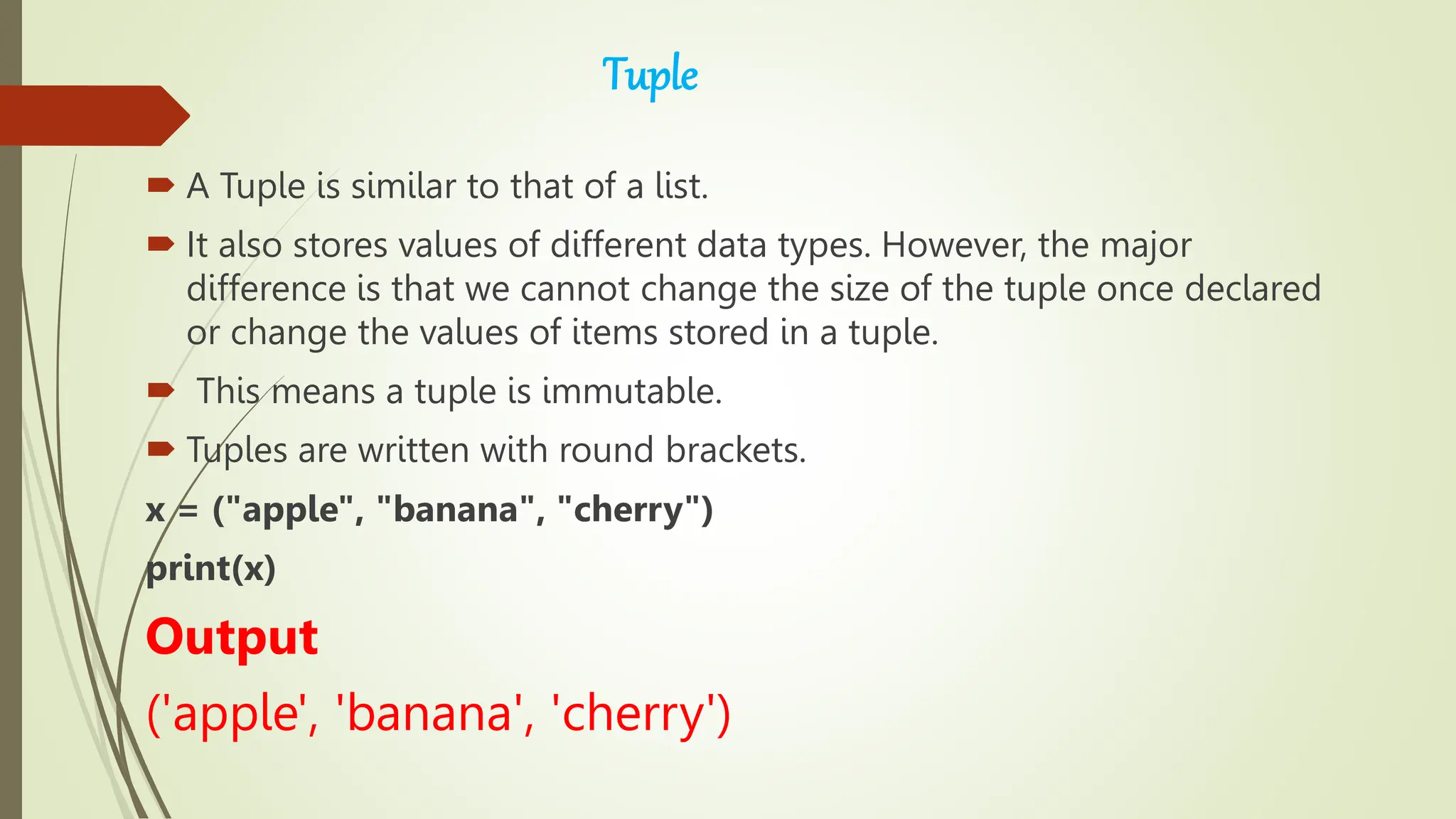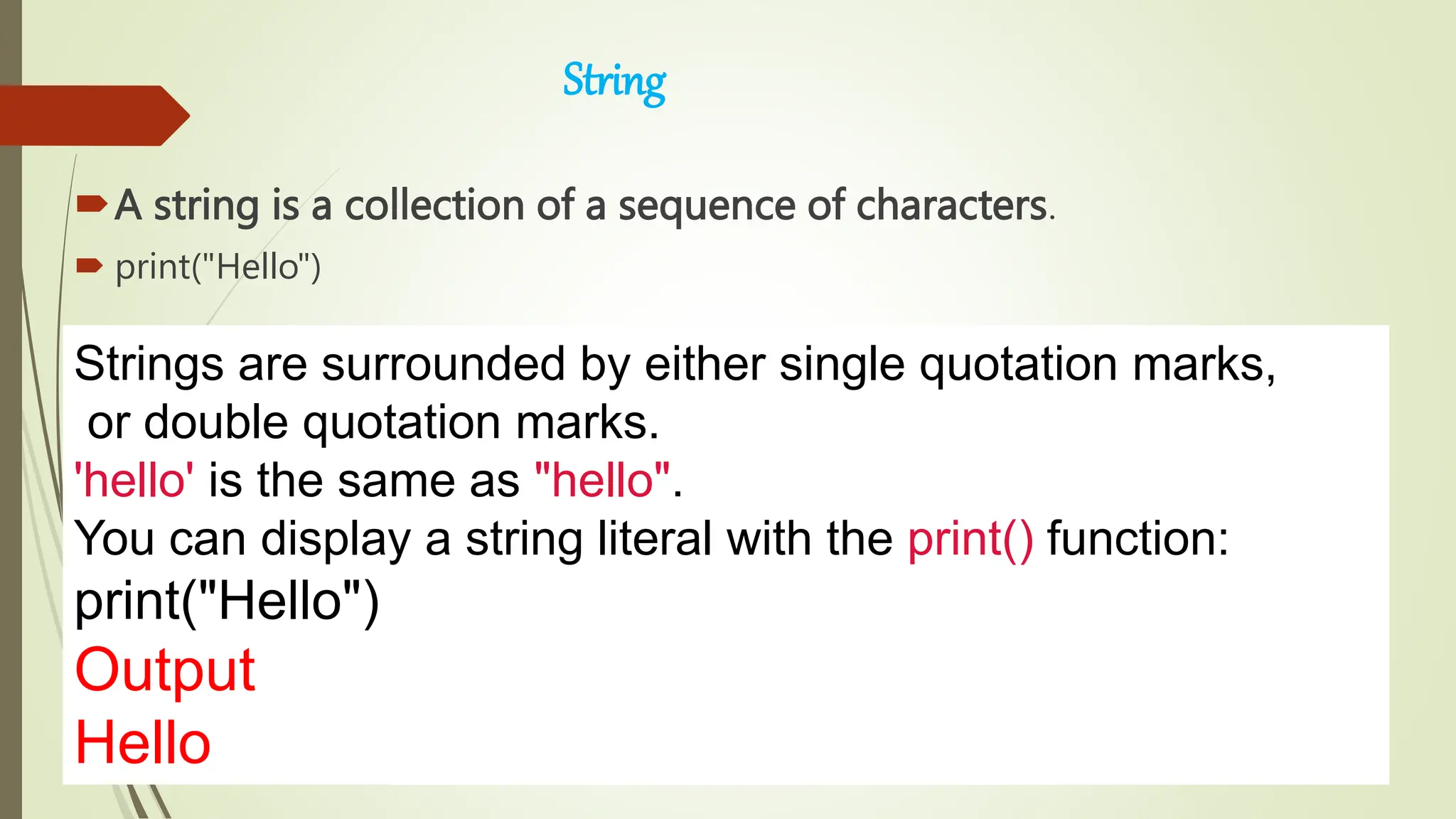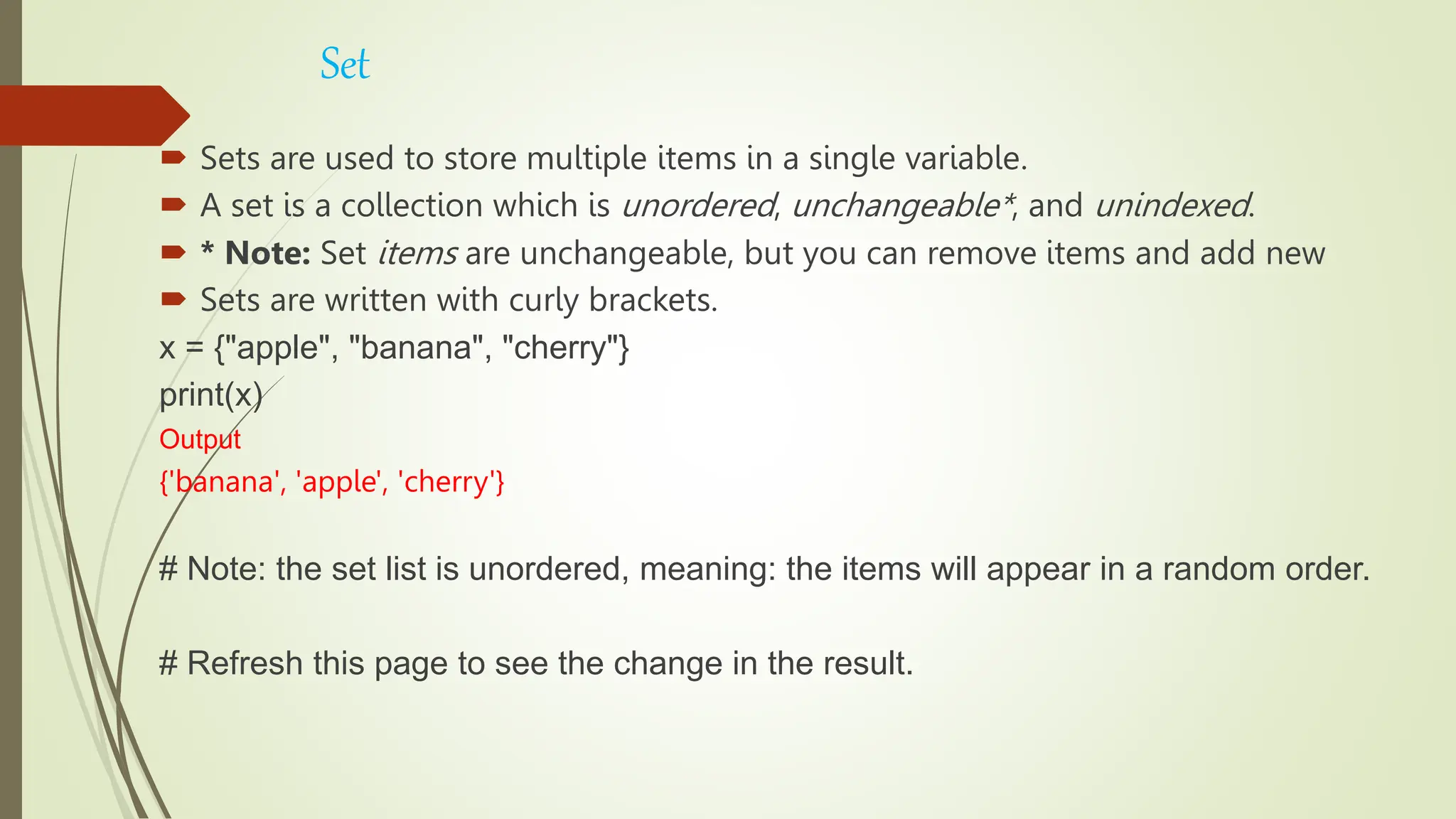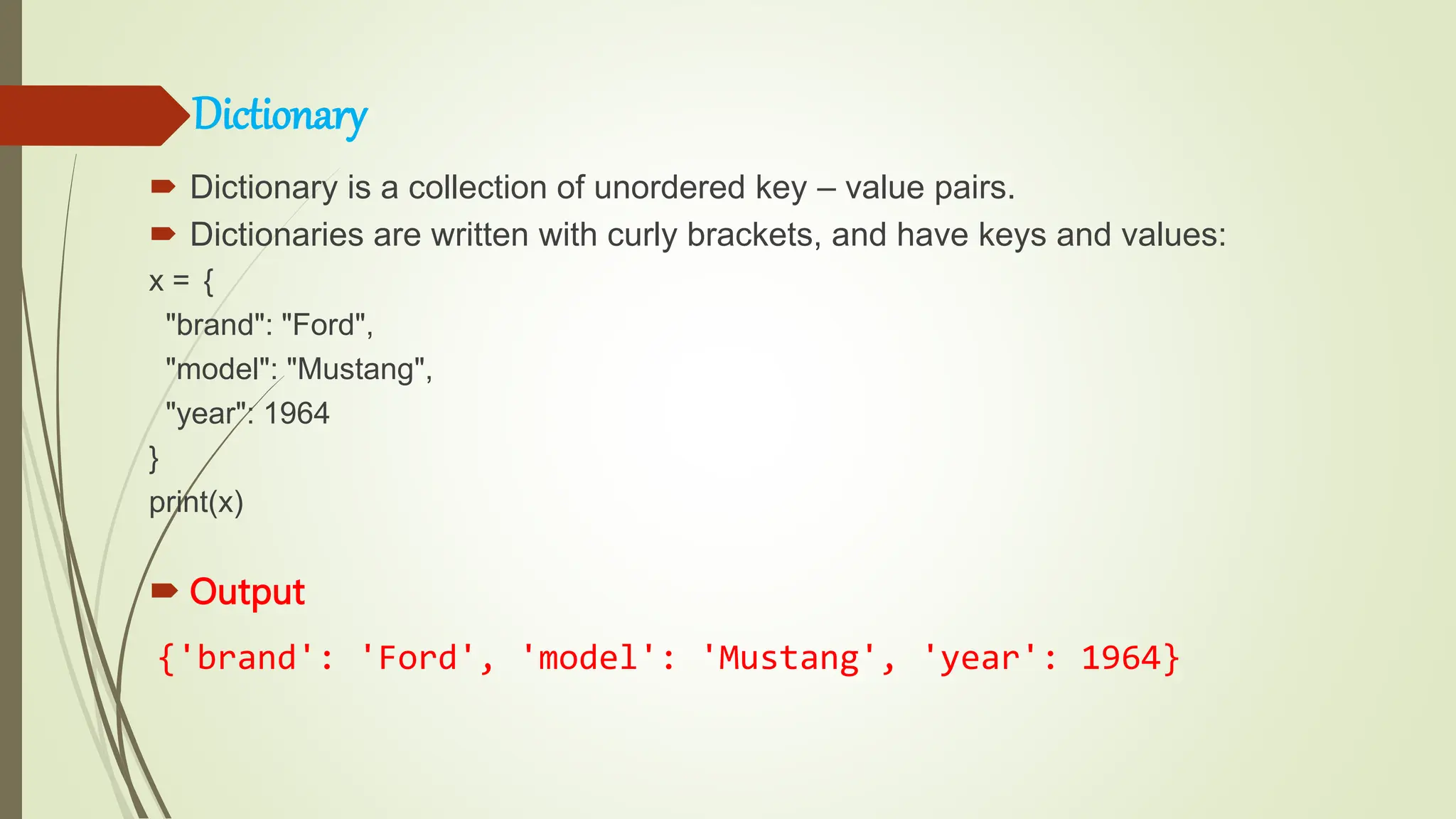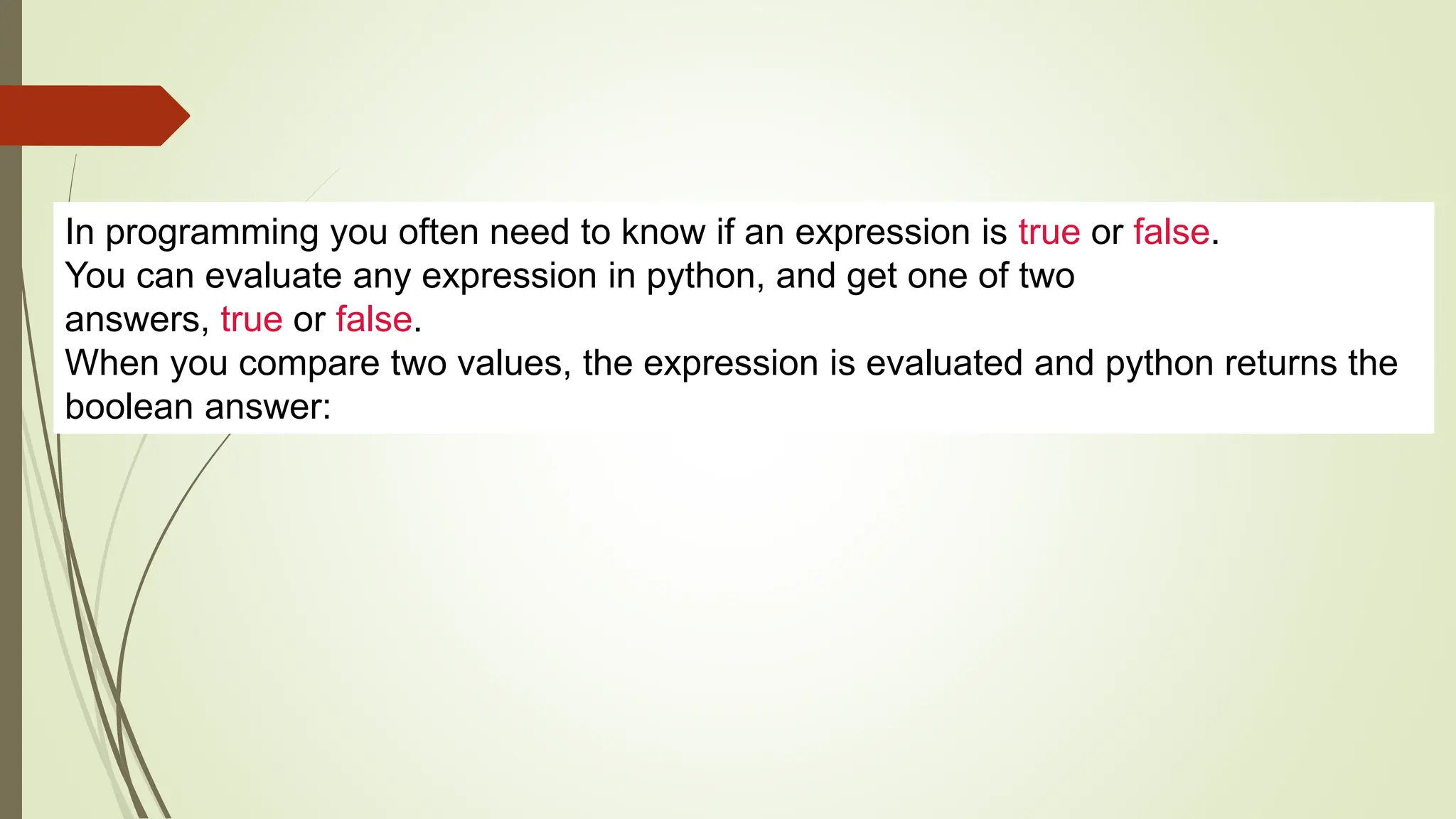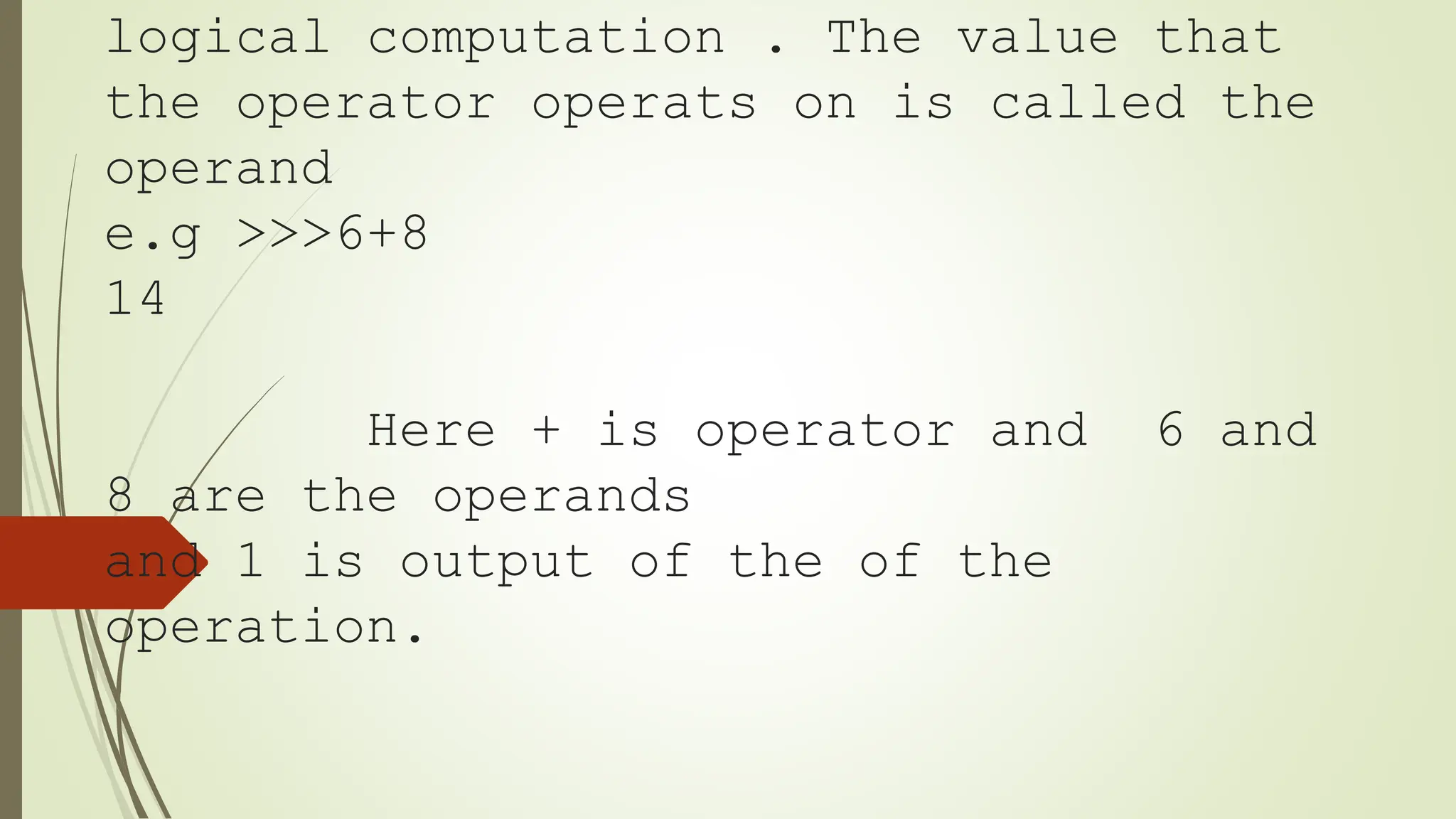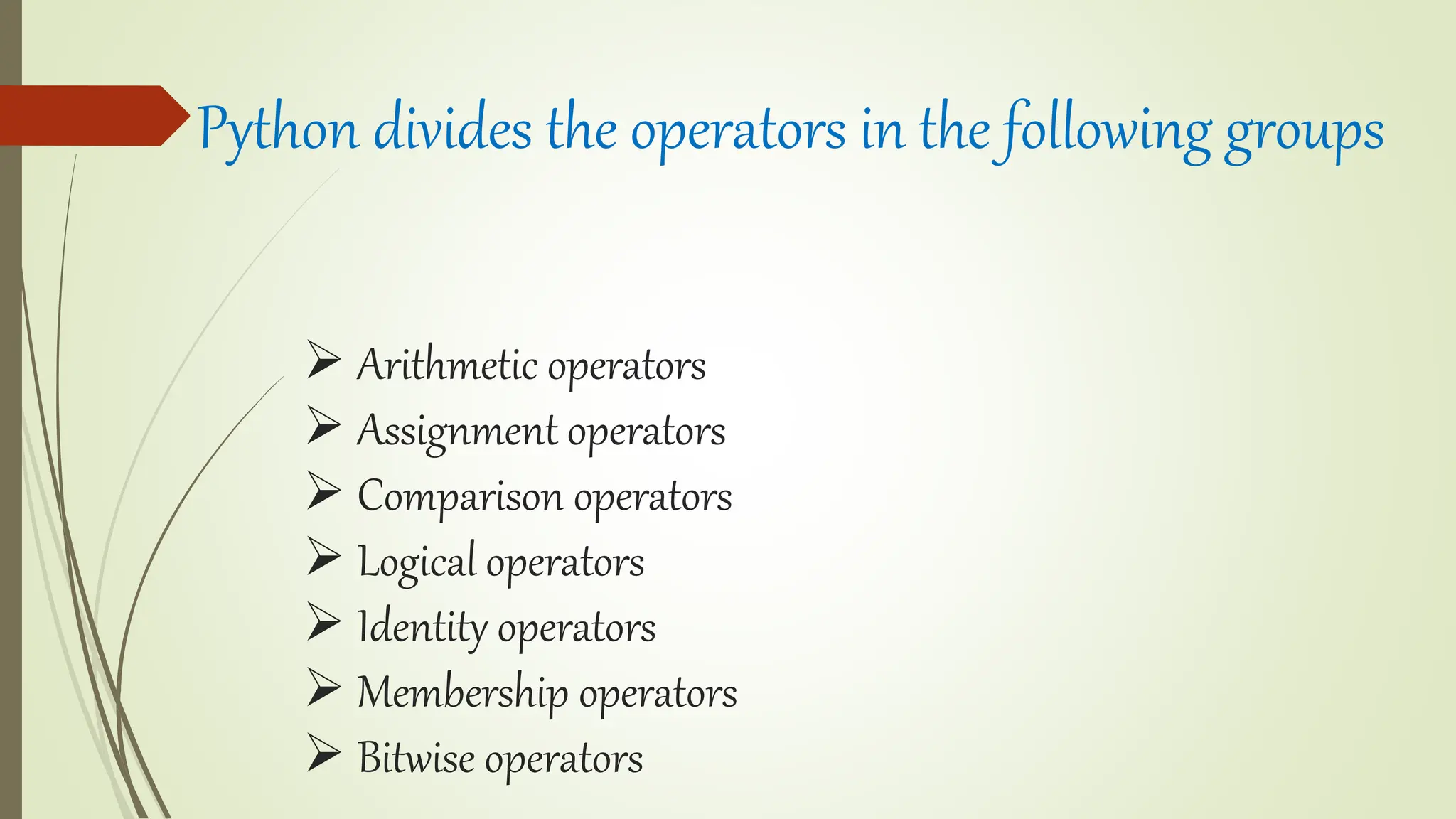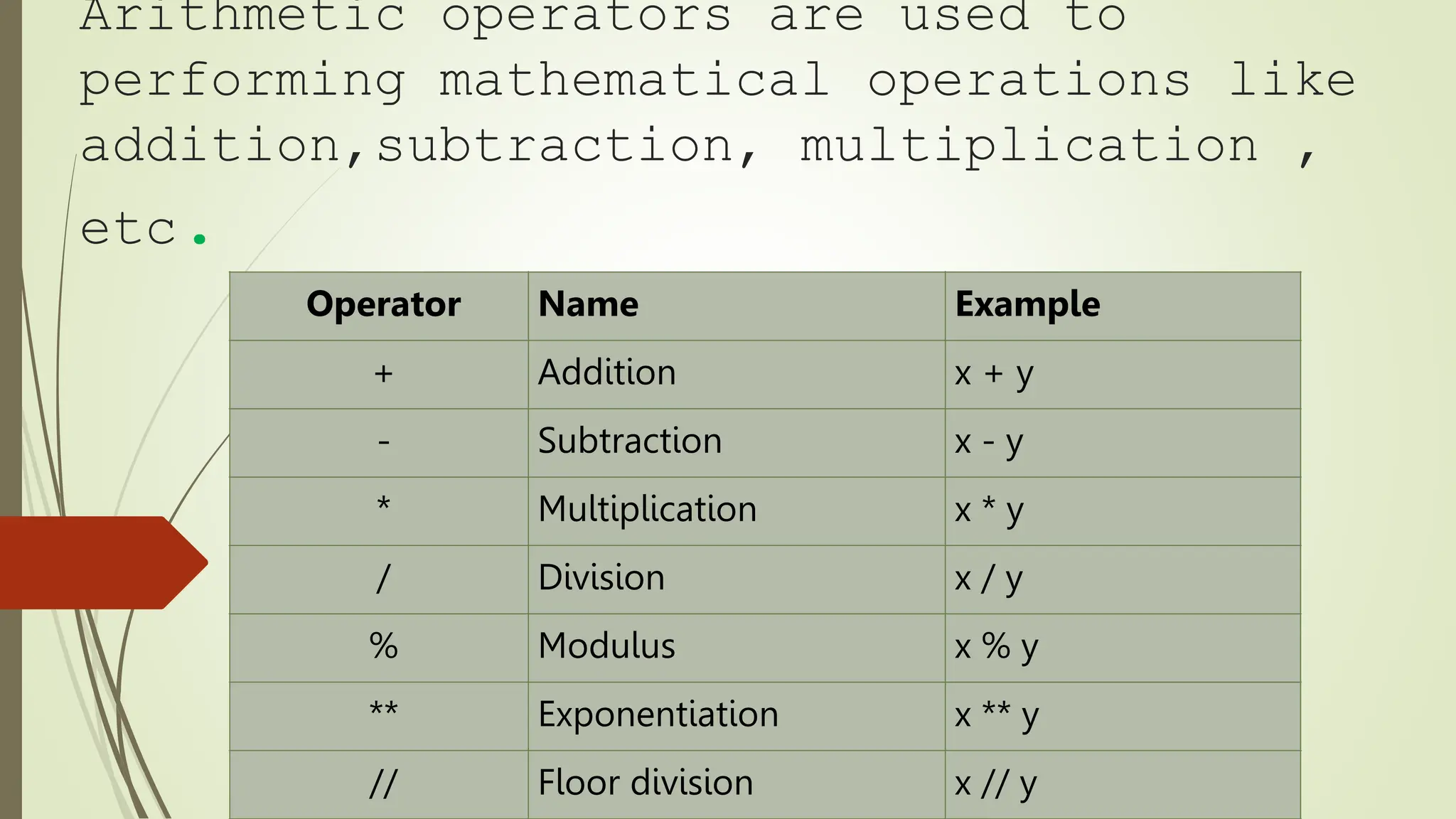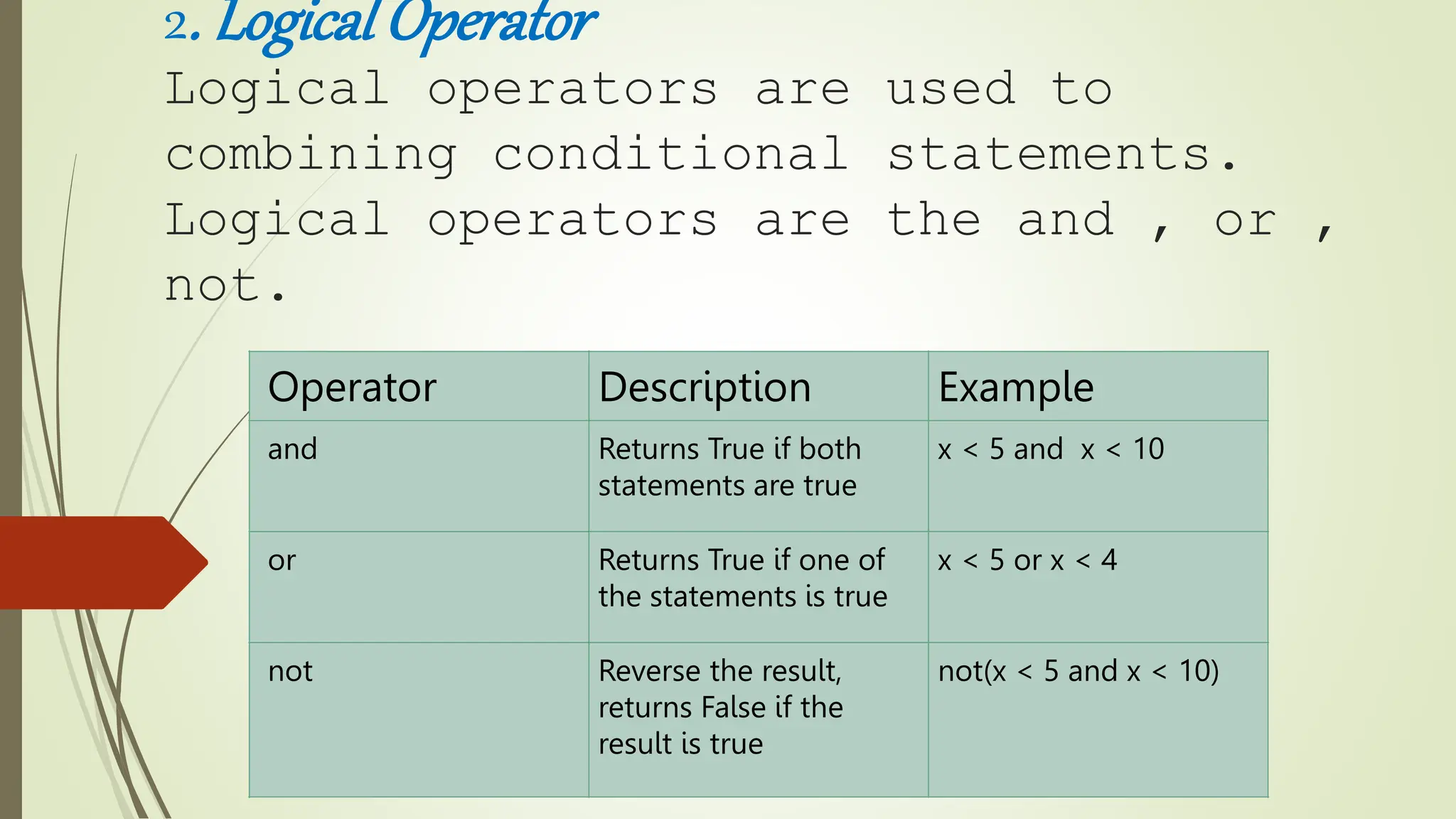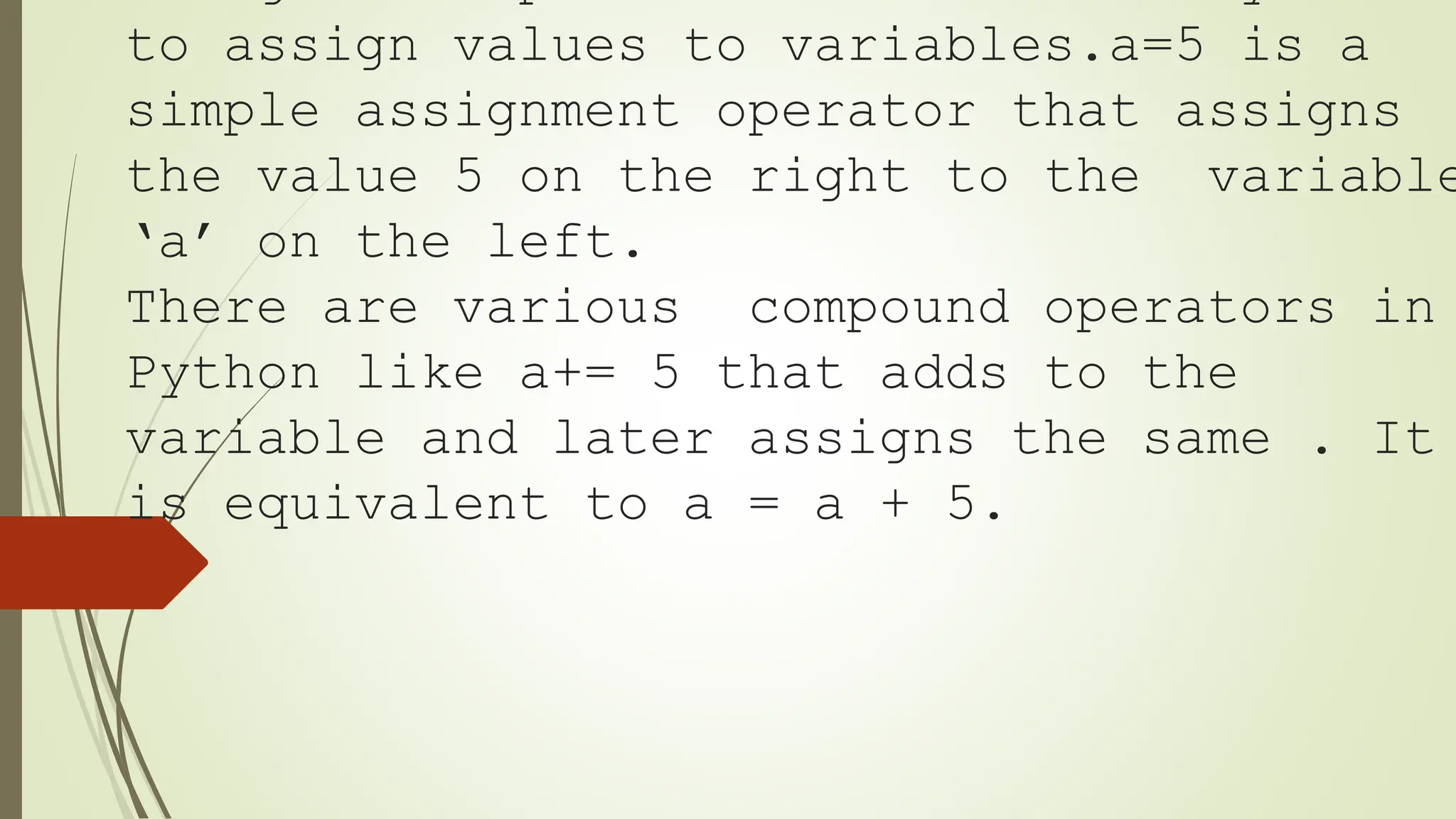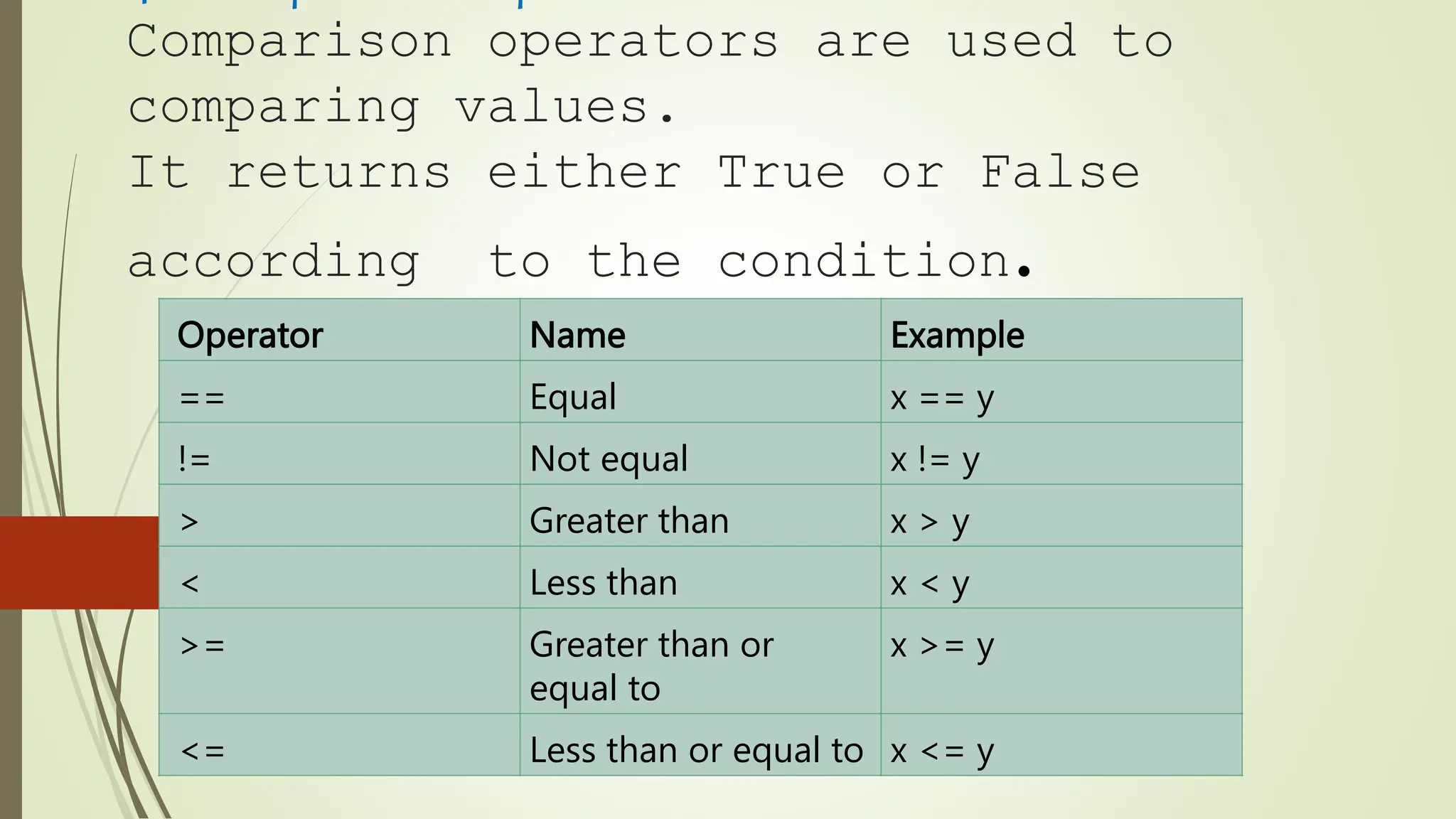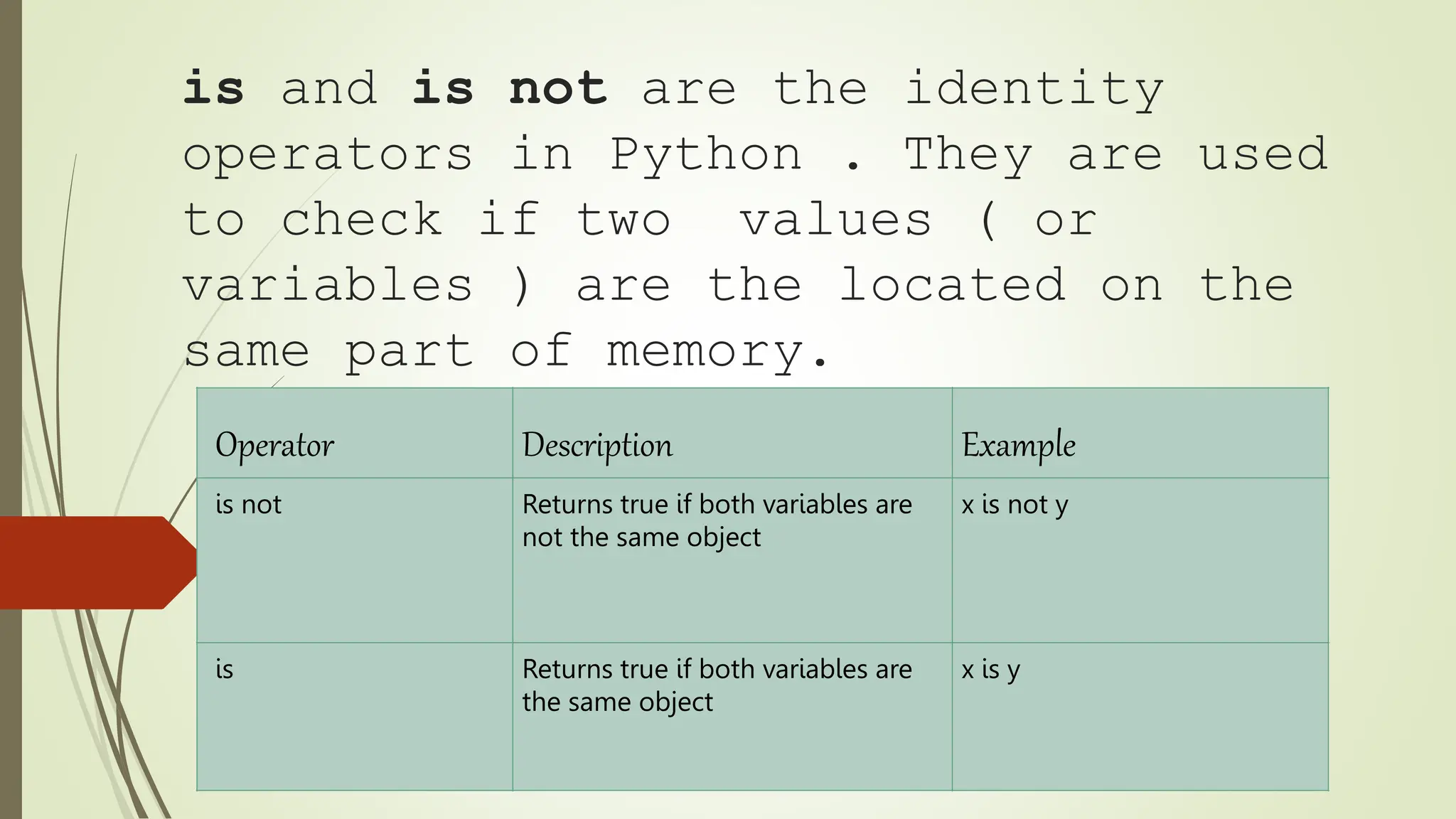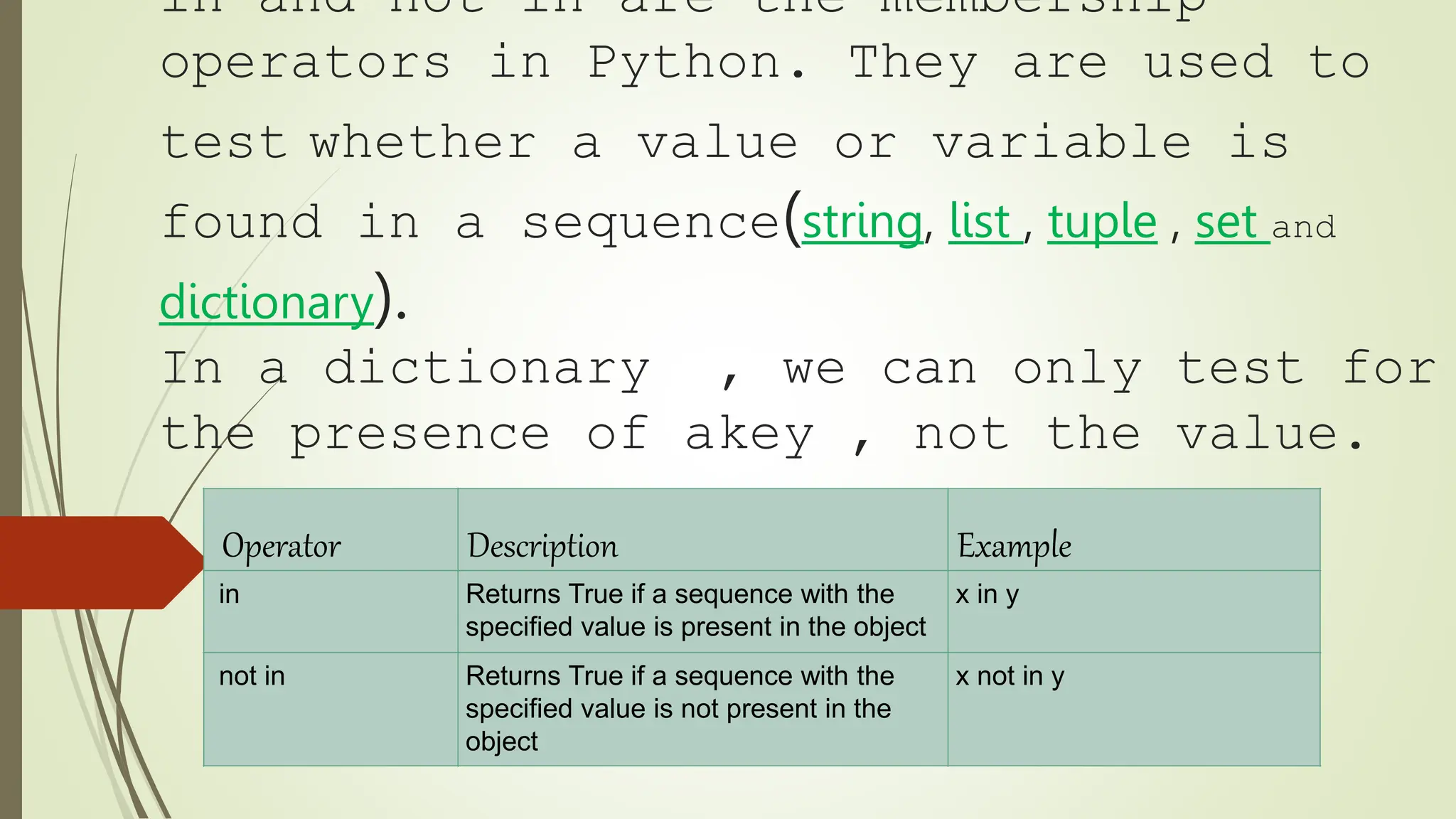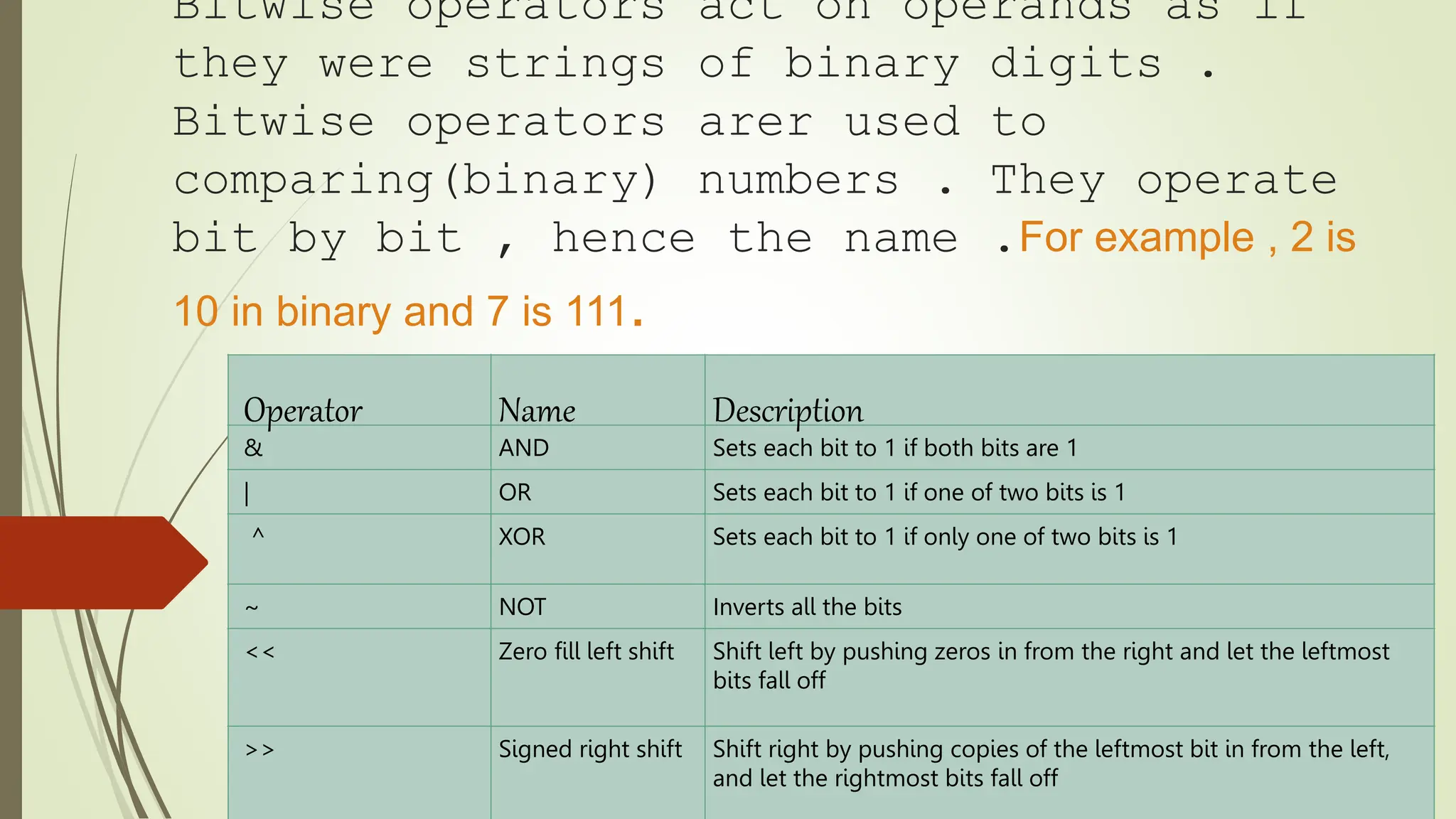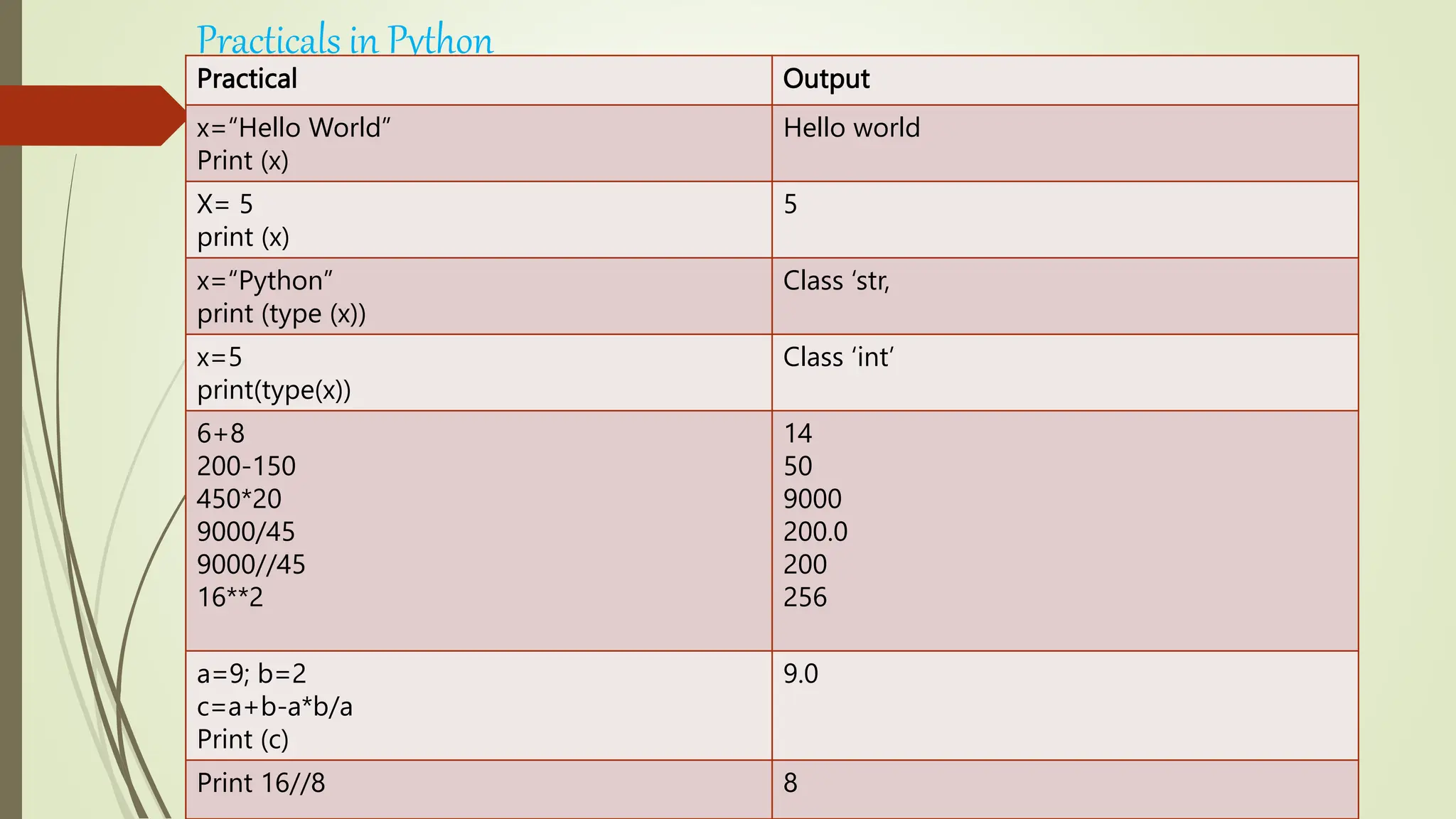Python is a powerful and widely used general purpose programming language. It has a simple syntax similar to the English language and allows developers to write programs with fewer lines of code compared to other languages. Python supports key data types like numbers, strings, lists, tuples, dictionaries, sets and Boolean values. It also supports common operators for arithmetic, comparison, assignment, logical, identity, membership and bitwise operations. Some key advantages of Python include being interpreted, having dynamic typing and readability due to indentation.
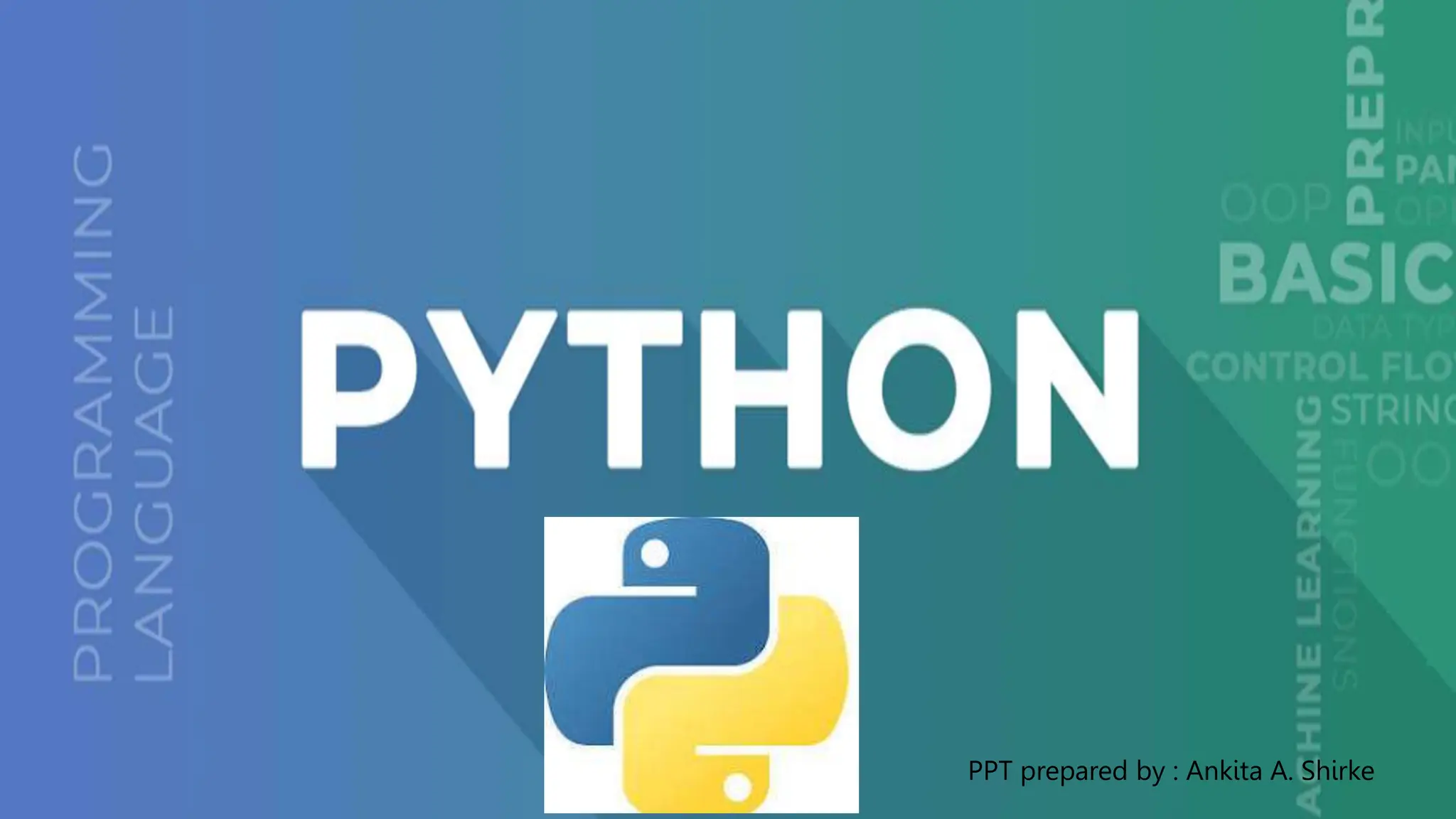
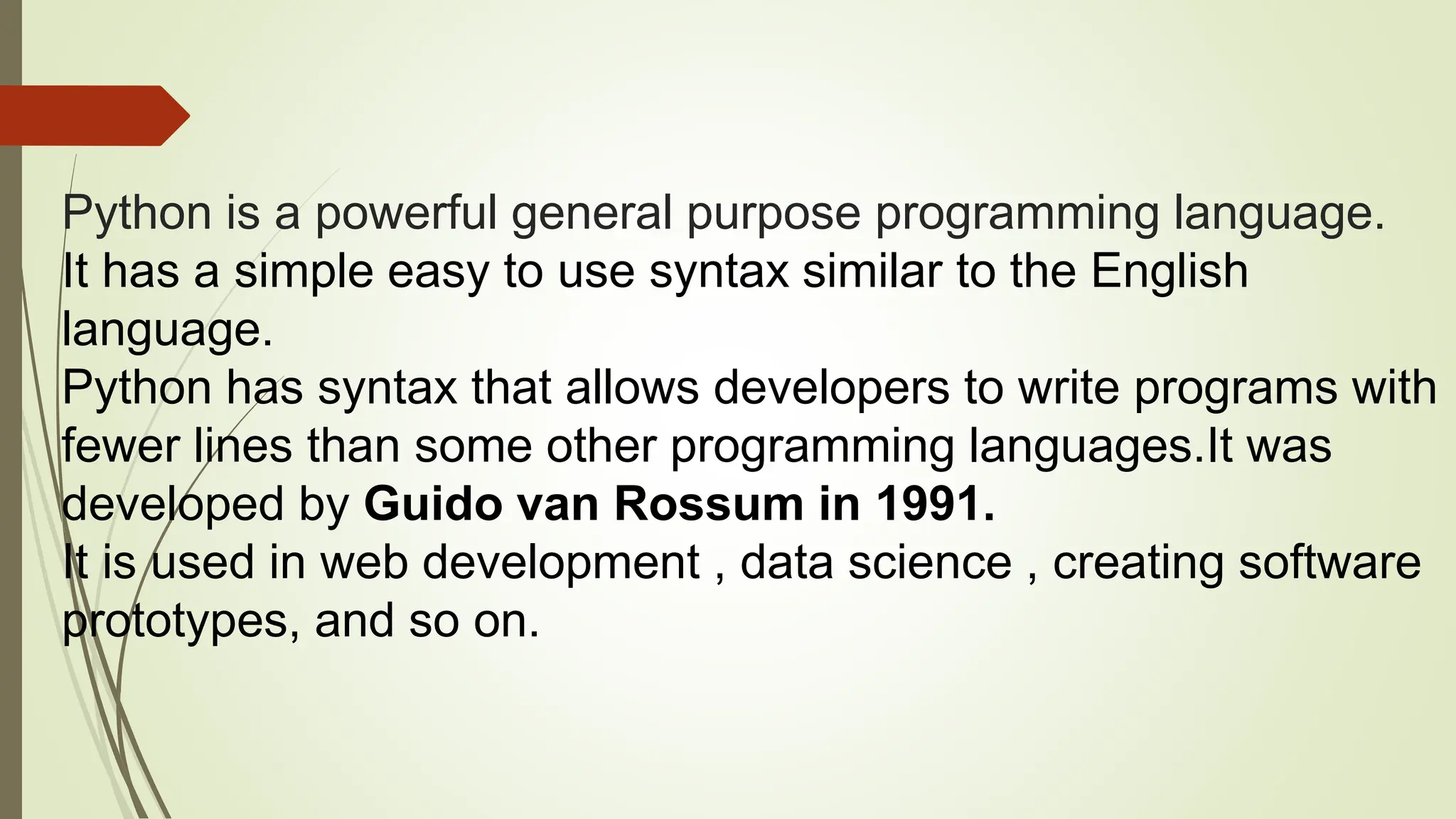
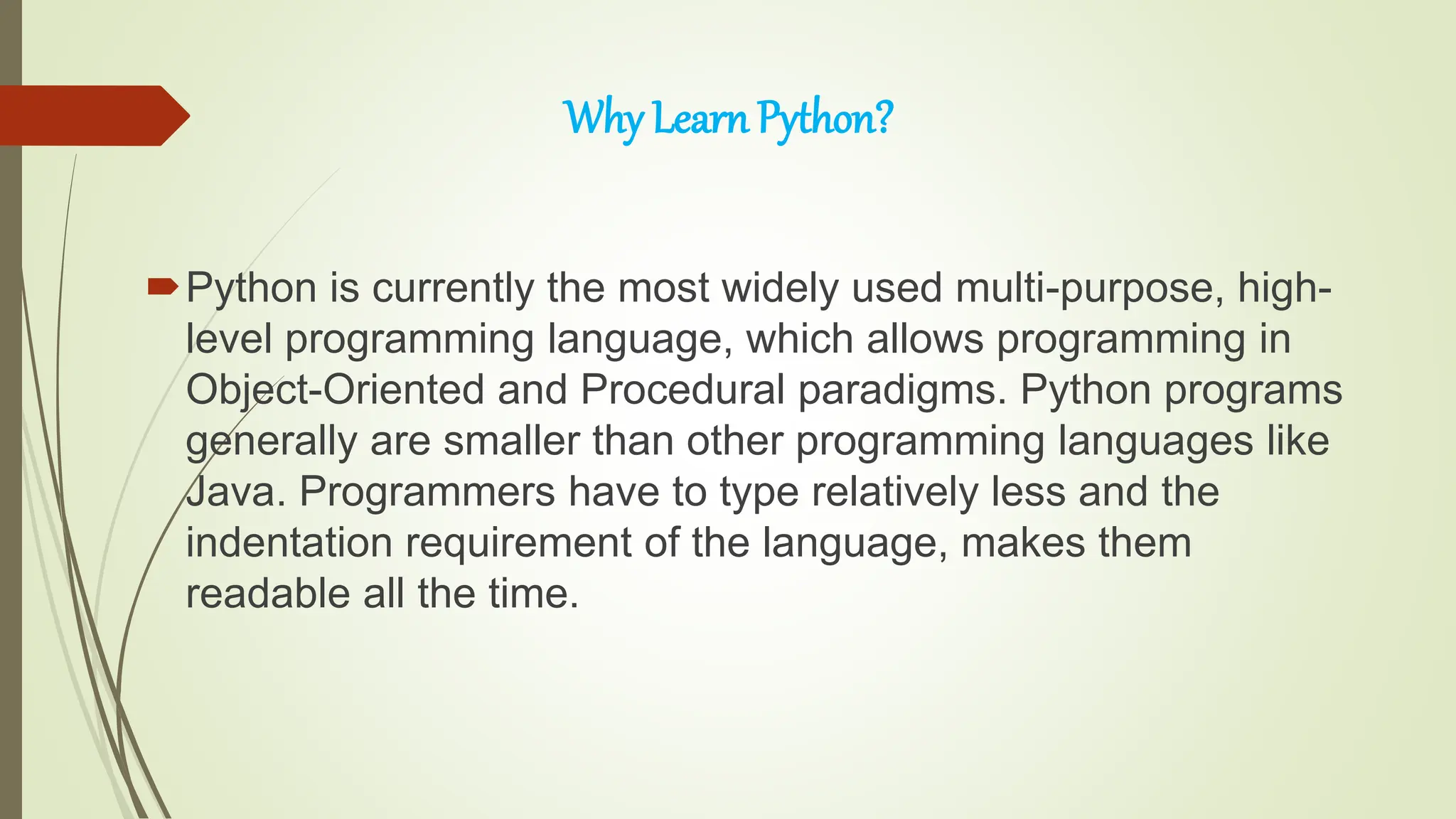
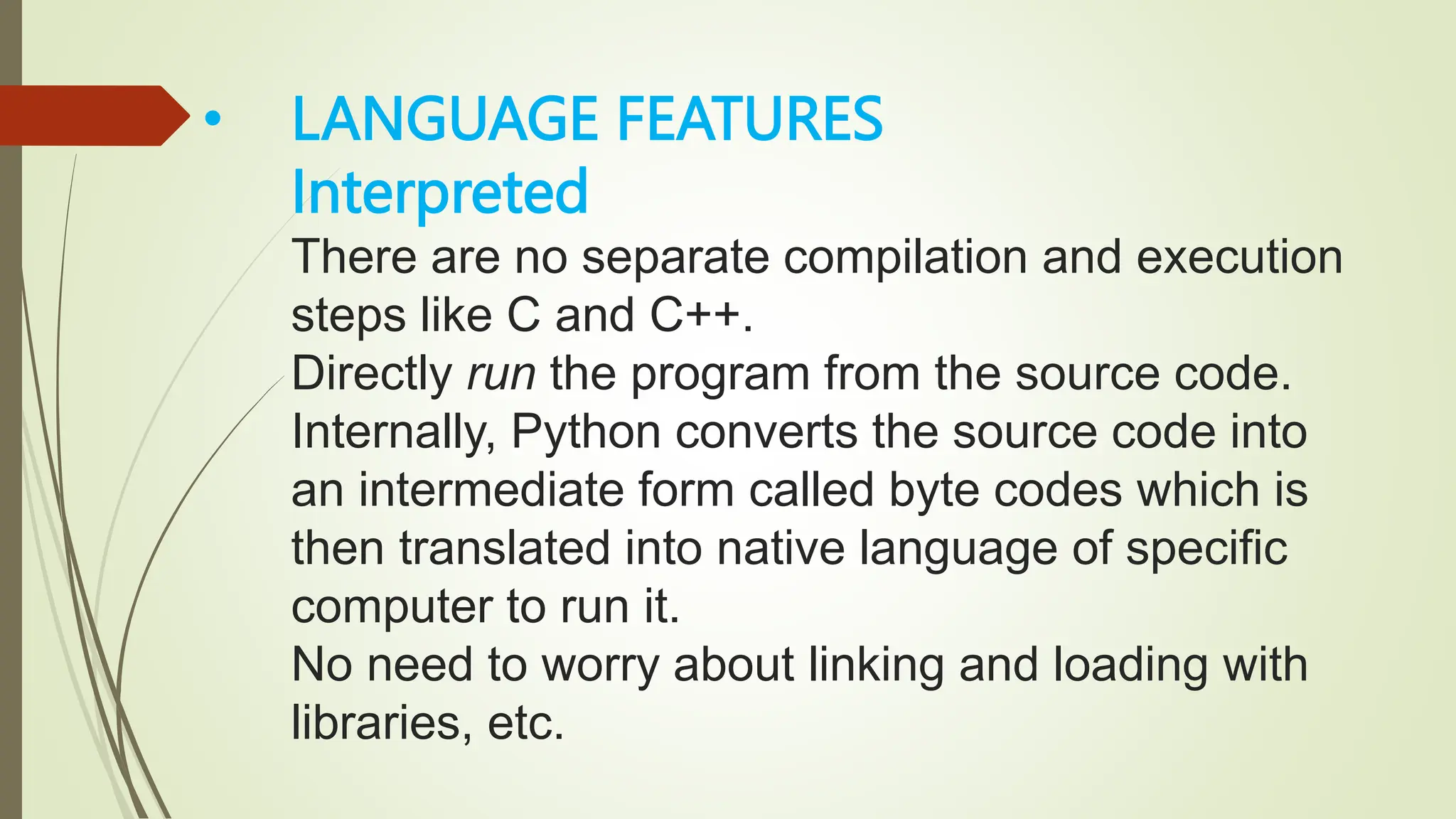
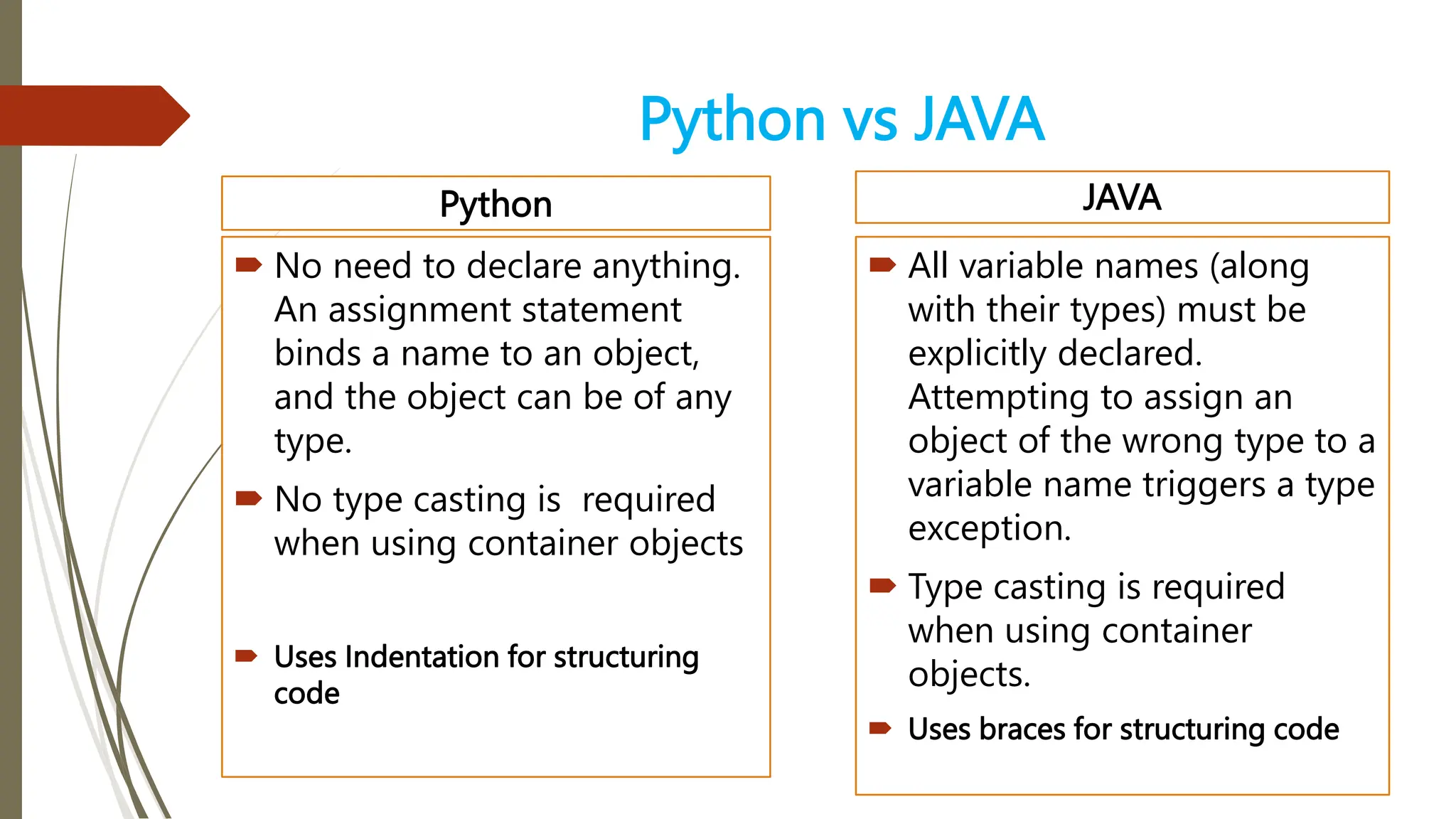
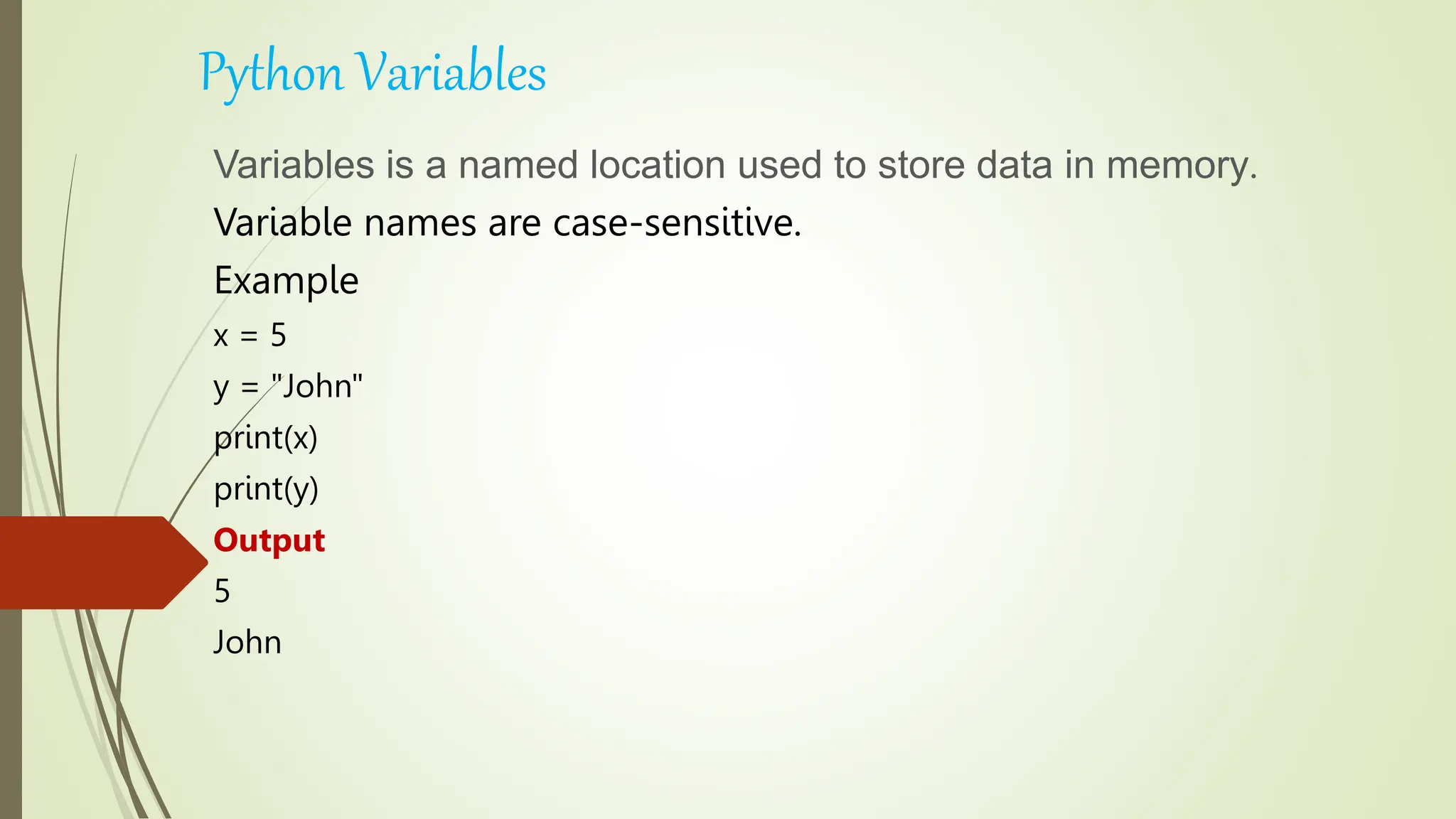
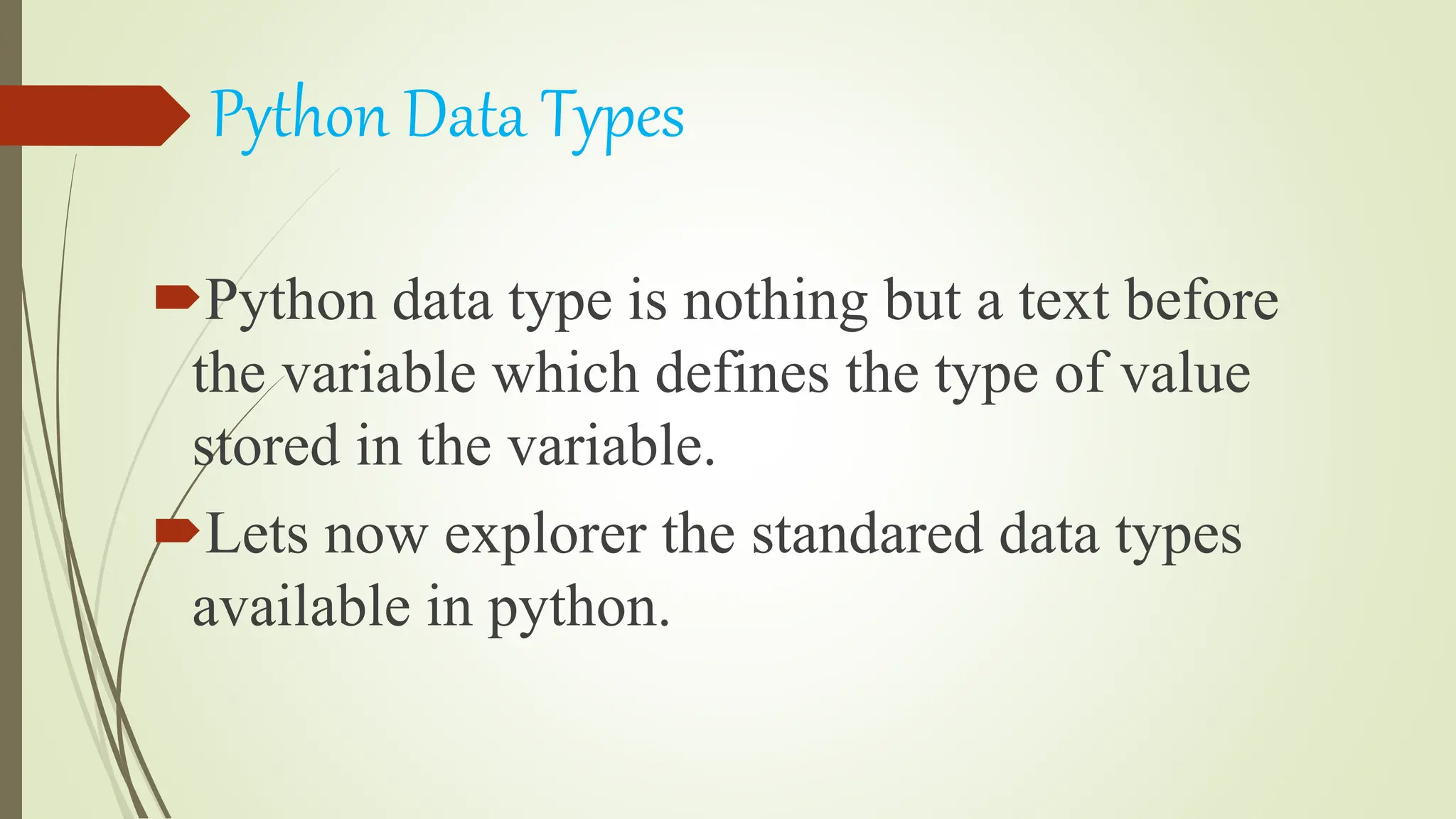
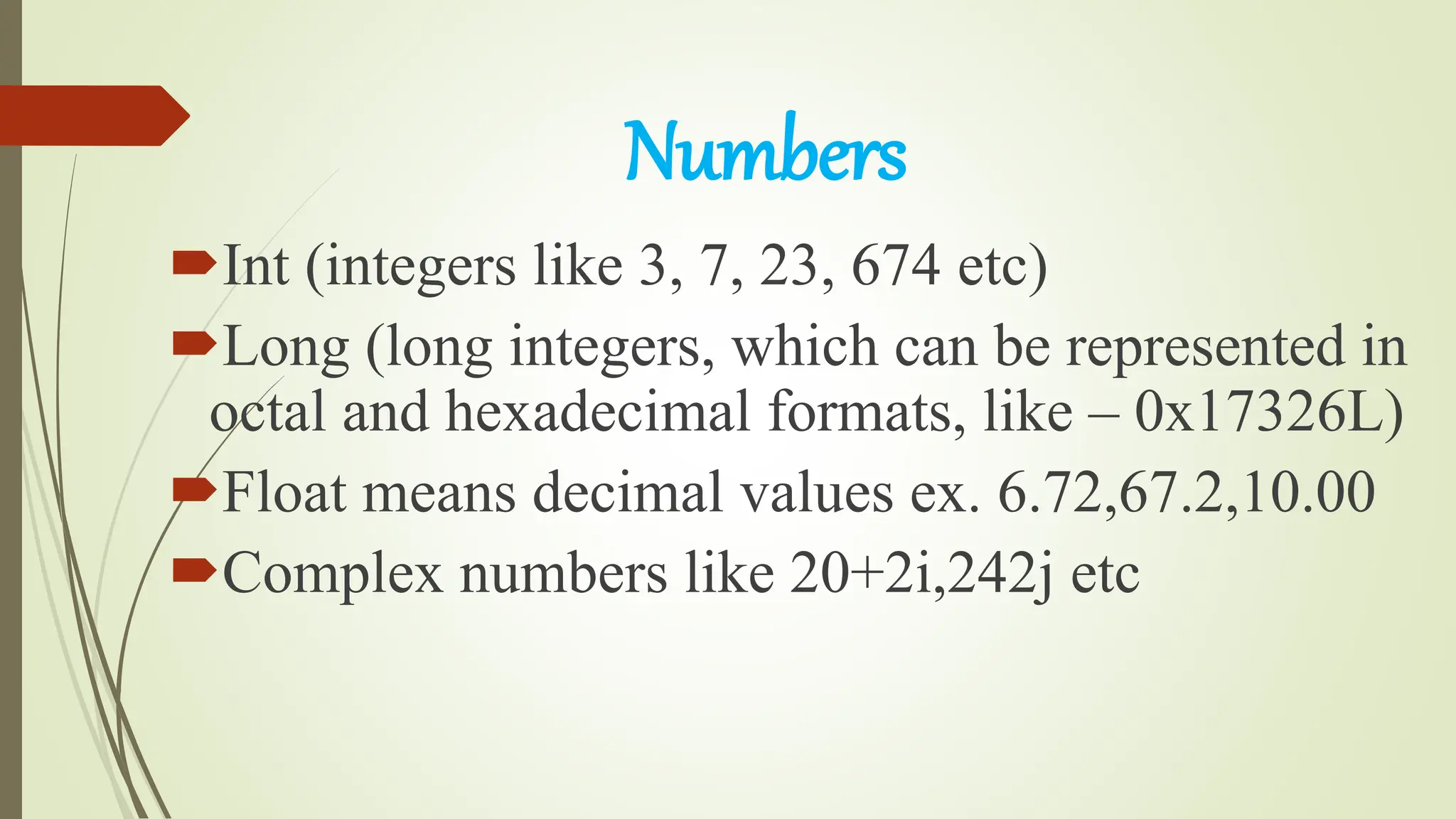
![List
List are used to store values of different data types in sequential
order.
In simple, they are similar to arrays in C but unlike arrays, they
store values of various data types.
Lists are created using square brackets
Example
x = ["Java ", "C++", "Python"]
print(x)
Out Put
['Java ', 'C++', 'Python']
['Java ', 'C++', 'Python']
['Java ', 'C++', 'Python']](https://image.slidesharecdn.com/python-240106083352-2dcace04/75/Python-pptx-9-2048.jpg)
